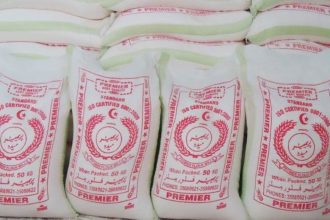In Iran, two female journalists, Negin Bagheri and Elnaz Mohammadi, have been given a three-year prison sentence for “conspiracy” and “collusion”. As detailed by their attorney, Amir Raisian, this sentence will have a substantial portion suspended, requiring them to serve only a small fraction of the term that totals less than a month behind bars.
Furthermore, the court has mandated a five-year probation period for Bagheri and Mohammadi, during which they must undergo “professional ethics training” and face a ban from exiting the country. The exact accusations against the journalists have been left undisclosed, leaving uncertainty over the reasons behind their sentencing.
Iran’s Deepening Crisis
The incident is not isolated but a continuation of a troubling trend in Iran, where journalists routinely face peril and restrictions in their duties. Elnaz Mohammadi’s sibling, Elahe Mohammadi, also engaged in journalism with Ham Mihan, has been in detention since September 2022.
The root of Elahe’s detainment can be traced back to her reportage on the funeral services of Mahsa Amini, a young 22-year-old Iranian Kurd who met a tragic end during her time in police custody. Initially apprehended due to purportedly breaching Iran’s stringent dress code regulations, Amini’s death spurred a series of nationwide demonstrations, wherein the populace voiced their grievances and sought justice.
Unfortunately, these demonstrations turned violent, culminating in several unfortunate deaths and the detainment of many protestors. The government authorities were quick to brand these movements as “riots” propelled by foreign influences. A grave outcome of these events saw the execution of seven individuals charged with acts of aggression against the security forces during the protests.
Press Freedom in Iran: A Worsening Scenario
Human rights organizations situated beyond Iran’s borders have chronicled an escalation in apprehensions as the anniversary of Mahsa Amini’s demise approaches, indicating a systemic crackdown on journalists and individuals associated with the media sector. This suppression is illustrated vividly by the incidents in the past month where a startling number of journalists – over 90 since the 2022 protests – have been incarcerated or under scrutiny by the authorities.
Nazila Maroufian, another journalist who had momentarily tasted freedom after being bailed for opposing Iran’s dress code, has once again been taken into custody, emphasizing the oppressive environment that the press in Iran currently navigates.
The series of events bring to light the daunting hurdles that journalists in Iran are presently grappling with. It accentuates an urgent call for international vigilance and intervention to protect and uphold the essential democratic pillar of press freedom in the country.






